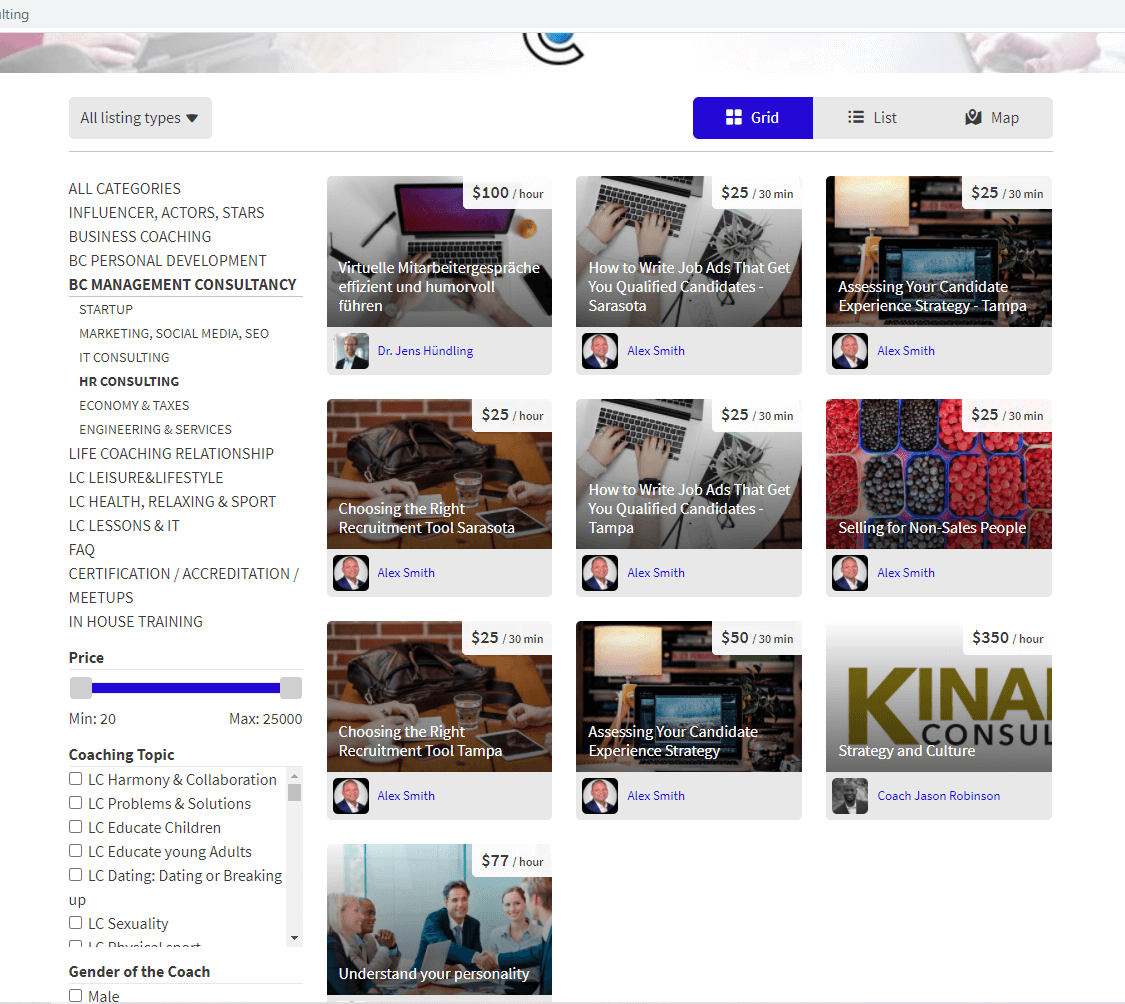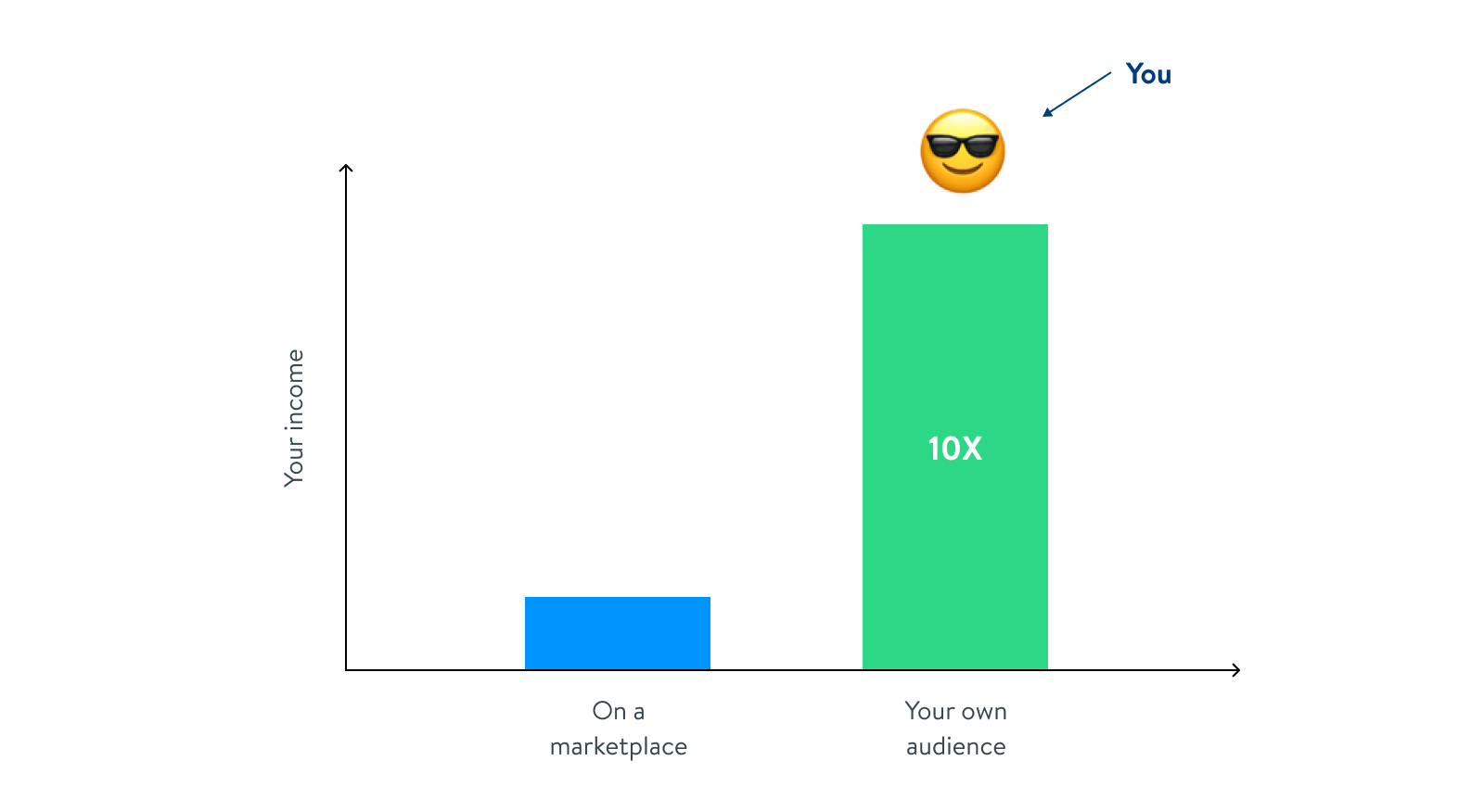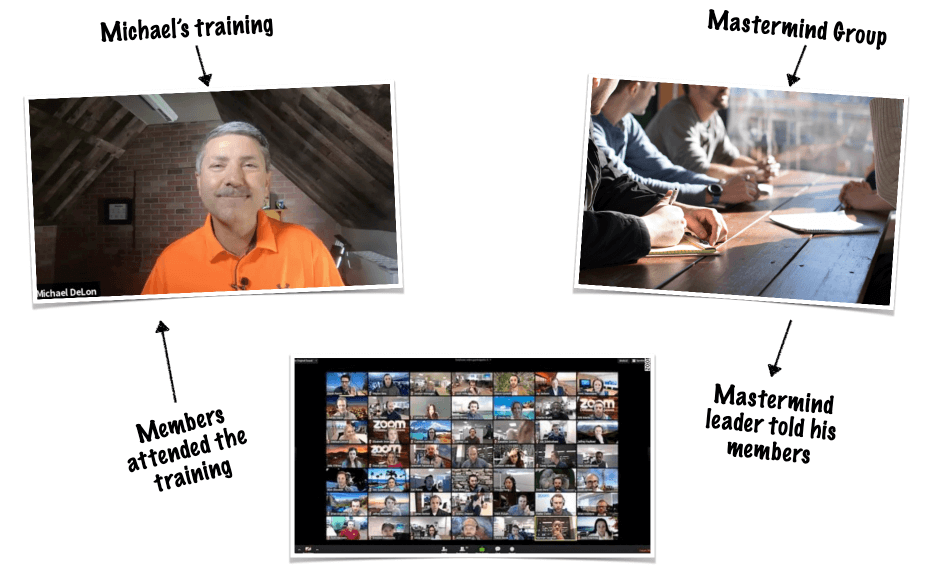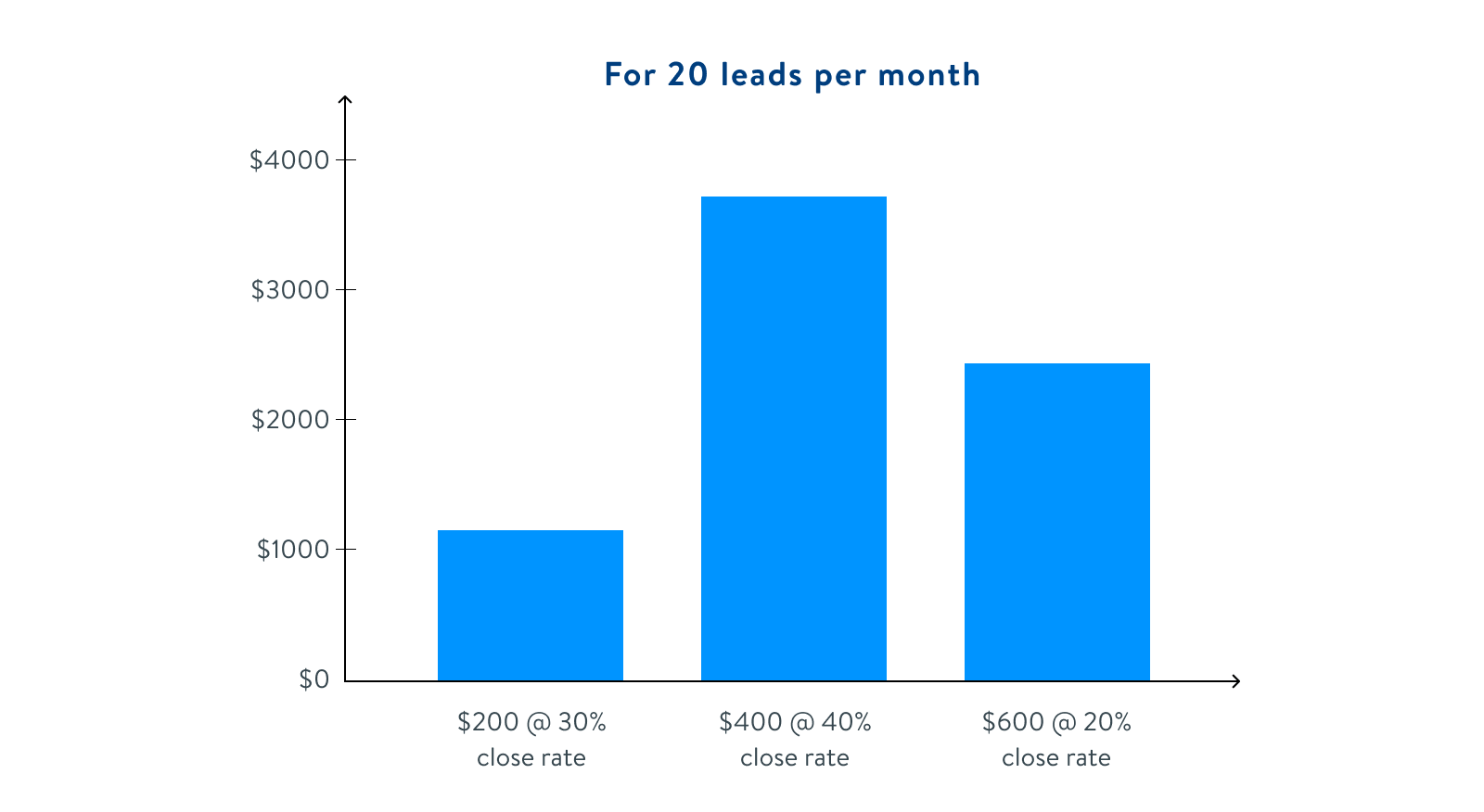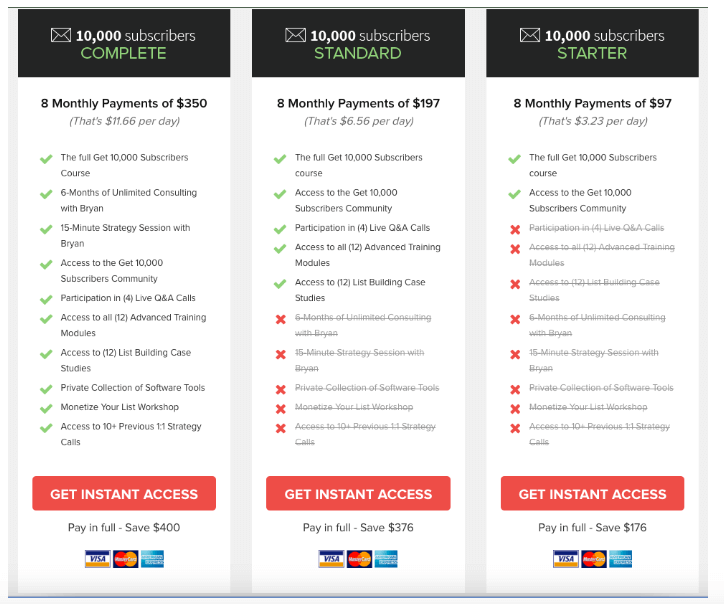If you want to know how to price a coaching package or consulting service, I’ll show you how.
But let’s get real about something for a minute:
Y’all are really just here to learn how to raise your prices.
So if you’re brand new to coaching or consulting, I’ll show you how to set an initial price.
But the meat of this post is all about how to raise those prices and grow a strong enough brand that you can charge what you want, not what the “market” says you should charge.
You’re going to make your own market.
How?
By following these steps:
- Set (or audit) your initial price
- Fix your lead flow (this is actually the most important step, and yes, I’ll show you how)
- Make more money with these three strategies:
By the way — coaching and consulting are similar enough that the same pricing advice works for both.
The only difference is that consultants may feel pressure to charge custom consulting fees for each job because they attract more varied, B2B clients and can have more behind-the-scenes work.
Sometimes that’s necessary. If you land a super cool business consultant gig with an enterprise company that’s going to pay you huge fees… well, don’t let me get in your way! If your work involves custom deliverables it’s hard to charge a fixed rate.
But most of the time, it’s better to sell a specific package to similar clients than to create something new for each job. It’s more efficient and you’ll find it much easier to raise your prices over time.
That said, if you absolutely must create a custom pricing model, make sure it’s tied to an hourly rate or a daily rate that keeps going up.
With that caveat out of the way, let’s dig in.
Looking for proven, step-by-step methods to grow your coaching or consulting business? Book a complimentary strategy session where we’ll audit your business strategy and talk through a 90-day plan to skyrocket revenue.
Step 1: Set or Audit Your Initial Price
This step might seem complicated, but it doesn’t need to be. Your pricing strategy should result from the answers to a handful of questions:
- What’s the minimum amount you need to make per hour for this work to be worth it?
- What are your competitors charging for similar services?
- Where are you selling your coaching or consulting? (i.e., on a marketplace or to your own audience)
Write those answers down.
If you’re selling your services on a marketplace, then your price has to be anchored to going rates on the platform.
You WILL be tied to a lower price point until you move off the platform.
If you’re a new coach, aim to be neither the lowest (“that’s too little, must not be good”) nor the highest (“who does he think he is?!”) price.
There’s very little room on most platforms for you to differentiate yourself from the competition (depending on how easy it is to display great testimonials and case studies), so the easiest way to catch potential clients’ attention is to pick a Goldilocks price.
Here’s an example.
Say you’re on coachtheworld.com and you want to offer HR consulting. If you filter the current results for your vertical, this is what comes up:
On the low end, one coach is offering $25 – $100/hr based on the topic. The high end is $350/hr for consulting on “strategy and culture.”
That means your sweet spot is between $150 and $200 per hour. If you’re happy with $150/hr to test the waters, start there. But if you answered question a) above (‘What’s your minimum number…’) with $200, start there instead.
If you’re selling to your own audience and not on a marketplace, then your competition is the folks who turn up in a Google, LinkedIn, or Facebook search (or another social media site if you’re planning to dominate that platform). Pick one where your target audience hangs out, find out what the coaches on the first results page are charging, then aim for the middle.
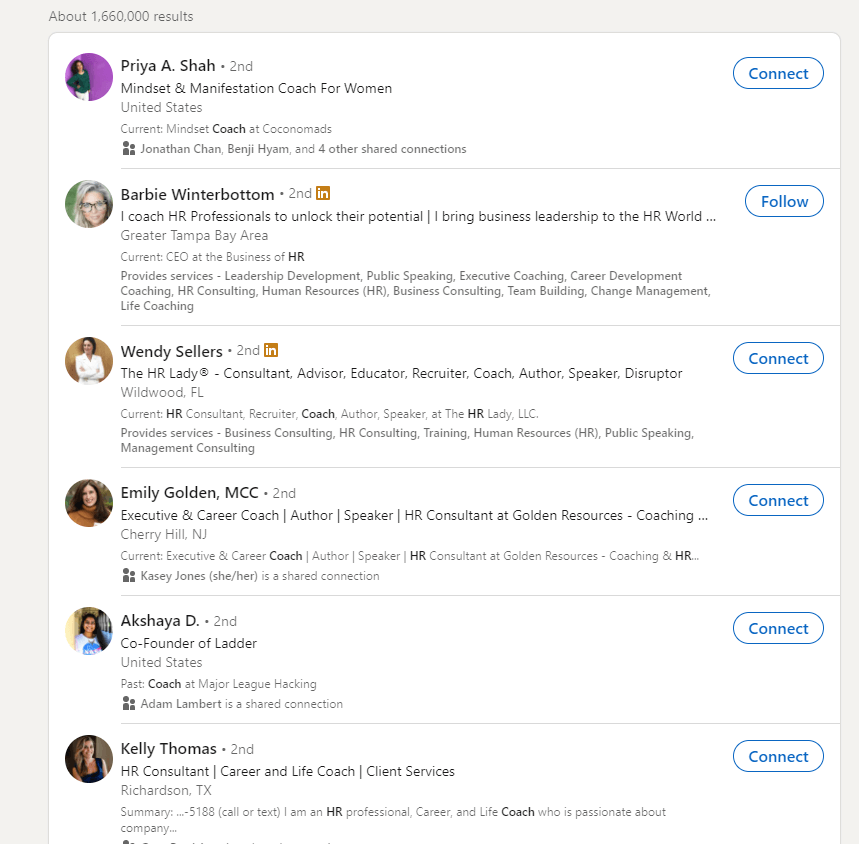
Once you’ve identified five competitors and their consulting rates, choose a number in the middle that’s equal to or higher than your chosen minimum acceptable number.
When you’ve chosen your initial (or updated) rate, use it to secure your first few coaching or consulting clients. But don’t get comfortable. It’s a starting point and is meant to be raised.
One more thing — it’s easiest to start with an hourly rate, so do that if it’s what you want. But it’s better to offer packages with fixed prices, so you should plan to make the switch if you’re starting with an hourly billing rate.
We’ll talk more about how to do that later in the post. Before that, there’s something more important for you to work on: lead generation.
Step 2: Fix Your Lead Flow
If your waiting list is zero, then your price is never going up. But if you have 1,000 people waiting to get a coveted coaching spot, you can raise your rates whenever you want and people will still buy.
That’s one of the reasons it’s so important to get off whatever marketplace you’re using.
If you want to use it as a proof of concept or a quick way to earn side cash, that’s fine. But if you want to build a full-time coaching business or consulting practice, you need to own your audience.
You can charge 10x more to an audience you own than whatever you’re getting on a coaching marketplace.
Why?
If I’ve been following you for six months, trust you, and want to work with YOU via the unique program you have, I’m not looking at what the other guys are charging. Because they aren’t you.
So what’s the best way to build your audience and get new leads consistently?
You can expand your channels over time, but for most coaches, it’s ideal to start with these three:
- Renewals
- Referrals
- Teaching one new audience a week
One of these things doesn’t sound like the others. 🙃
Renewals are obvious: Someone who’s bought from you before is likely to buy again. Give them a good reason to, whether it’s because your ongoing help continues to hold value or because you have multiple products that interest them.
So are referrals. If you have happy clients, get them to refer new business. We have a whole post on how to do that easily.
And then there’s teaching one new audience per week.
We’ve used a few different names for the strategy (partnership marketing, anyone?), but my favorite is OPA: Other People’s Audiences. Short, sweet, easy to remember.
Here’s the deal. Marketing can feel like a drag when all you really want to do is teach people what you know best.
Facebook ads? Webinars? Setting up your email automation? Not the fun part of the job.
But you have to do some of those things to help people find you. And one of the most efficient (and not boring) ways to get new leads is to find people whose audiences overlap with yours, and then get in front of those audiences.
I’m not talking about your direct competitors — just other coaches, course creators, group moderators, influencers, etc., whose audiences happen to need what you offer.
For example, our client Michael Delon used this strategy to rake in $102,000 in revenue… from one presentation. He sells a high-ticket service — he’ll write and publish your book based on a few short interviews.
His best clients are professionals like finance advisors, attorneys, medical professionals, etc. So he pitched the leader of a mastermind group for tax resolution specialists.
30 of the mastermind group members attended. 9 booked a call with Michael to learn more, and 5 became customers.
You can learn all about the exact steps Michael took to pitch and run the presentation here.
And if you want step-by-step instructions to try it for yourself, read this post.
If you combine these three strategies — getting current clients to renew and refer the people they know, plus teaching one new audience a week with OPA — you will have a steady stream of qualified leads to grow your business.
Step 3: Make More Money
There are really only three ways to make more money with consulting and coaching services:
- Get more leads
- Raise your rates
- Get the same people to buy more
Getting more leads is key (even when you’re a coach and can only see so many people in a day) because it’s a necessary condition for #2: Raise your rates. We’ve already covered how to get more leads, so it’s time to talk about how to raise your rates and get more purchases.
For that, I have three recommendations:
- Raise your rates on new clients
- Create fixed-price packages
- Sell different services to the same people
You can do these in order or simultaneously. The first two are the easiest to implement, so I recommend starting with those and, once you’re better at pricing and positioning, adding new services for your existing clients.
Step 3a: Raise Your Rates on New Clients
Do not sit on your initial price forever.
As a coach or consultant, your income is tied to your time. Once you have a full roster of clients, the only way to push your income up is to charge more. There’s more than one way to do that, but just pushing your price up is the easiest way to earn more.
Start by raising your rate for new clients. Just double what you’re charging for your coaching program and pitch it to your next two or three leads.
I know that sounds like a lot, but most of the coaches we talk to could charge waaaaayyyy more than they currently are. So just DO IT.
Remember: The worst thing that could happen is the lead you’re talking to doesn’t close. So what? You fixed your lead flow in Step 2.
Say you’re charging $200/hr now and you typically close 30% of the leads who get on a sales call (or “discovery call” or “free training” — whatever you like to call it). You increase that to $400/hr when you pitch your next five leads. Two of them buy — that’s a 40% close rate, so increasing your price hasn’t hurt sales at all and you’re now making double the money.
For the next five leads, you pitch $800/hr. No one buys. So back it down to $600/hr and try again! If you get good close rates, stay there. If not, work the $400/hr price for a few months.
In six months you’ll be able to raise that rate again (but at this point, doubling it is probably too much. Bump it up by 15 – 25% and see what happens).
There’s a number somewhere between a $5,000 and a $2 million price tag for your service where increasing your price further will decrease your overall income because so few people buy. But it’s way further toward $2 million than you imagine right now.
Why?
Because you’re not selling in a competitive marketplace, you’re selling to your own audience. It’s not like your clients are walking into Publix and picking one out of twenty similar cereals. When you sell to your own audience, you’re selling on a trusted marketplace.
Those leads grow to trust and like you, so they’re not comparing you to anyone else. Price becomes all about how well you’ve positioned yourself and how well you can alleviate your clients’ burning pain, and not at all about what other people in your space charge.
When you’ve done a good job of building your own audience and filling it with people who trust your expertise, it’s easy to raise prices. But if you have to beg, borrow, and steal each client, it’s impossible.
So make sure you have Step 2 down. It will make raising your prices a cinch.
One more thing — when you’re pitching a coaching session, make it recurring with the ability to cancel anytime. Per month is better than per year so the charge isn’t a surprise. You’ll make far more revenue when the client only has to make one purchase decision for multiple sessions. Then it takes a fresh decision to cancel instead of taking a decision to continue.
What About Existing Clients?
If you rapidly increase your coaching rate until finding the current sweet spot, what should you do about the clients who came on at a vastly lower rate?
Fire them nicely.
Several years ago, I had a coaching client at $350 for two calls a month who was a great guy. He was an ideal client. But all my new clients were paying $1,000 for the same service.
So I sat down with him and explained that, while I loved working with him, my rates had gone up and I completely understood if it was too high for him. I gave him six months’ notice so we could wrap up what we were working on together and he could find someone else he trusted. At the end of the six months, he rolled off amicably and I filled his spot with a higher-paying client.
There are two things you need to do when you fire current clients:
- Give them advance notice (at least one month, but longer is better).
- Explain that you’d be happy to keep them on at the higher rate, but completely understand if they don’t want to do that.
Most of them will be disappointed, but understanding.
3b. Create Fixed-Price Packages (Sell an Experience, Not by the Hour)
At some point, raising your rate without making any changes to your service will start to slow down. If you haven’t created fixed-price packages, now is the time to do that.
Offering coaching packages as opposed to an hourly fee structure will further differentiate you from your competitors. It will help you decouple your program from market rates because it’s different from what everyone else is offering.
Say you offer me marriage counseling. If I Google that, I can choose from seven different programs. I’m comparing you with everybody else, and if you’re charging $1,000 more than the other guys, I’m not going to pick you.
So don’t sell me a $100/hr marriage counseling session that I have to choose to renew after each session. Sell me an $8,000 marriage revitalization experience.
Make your offer unique, specific, and concrete.
- Unique = something I can’t find anywhere else.
- Specific = clear on exactly what’s included.
- Concrete = clear on the promised results from completing the program.
You should also offer multiple flat fee pricing tiers.
The tl;dr: you can create packages of your core service plus some add-ons like bonus learning materials, additional group coaching, templates, etc. Mix more affordable packages with a premium price option.
When you’re done it could look something like this:
Offering packages was transformative for my coaching business.
When I started coaching, it was just me and my client talking through strategy. Now, I have Growth University, which is a package of coaching calls, a detailed marketing plan, automatic accountability check ins, and other resources to help my clients learn new ideas quickly.
Repackaging not only made it easier for me to offer a better service to my clients and improve their success rates, it made it easy for me to differentiate myself and charge what it’s worth, not what the “market” demands.
P.S. Some consultants offer monthly retainers. It’s recurring revenue, so that’s good, and it’s similar to a package. But retainer arrangements can suffer from scope creep and a feast/famine consulting work cycle.
I recommend package pricing that doesn’t include hours the client may or may not ask you to work.
3c. Sell Different Services to Different Types of Best-Fit Clients
If someone buys from you and has a great experience, then they’re likely to buy again if you offer something new. Creating a new service offering can be a lot of work, so this is not the strategy to start with. But eventually, it will bring additional stability to your business and increase the LTV of each client.
If you’re a marriage counselor, maybe that means you have a 6 month package for newlyweds, one for new parents, and one for empty-nesters.
If you’re a weight loss coach, maybe you have different packages for the same clients at different stages of their weight loss journey, like a weight-loss program and a maintenance program.
If you’re an HR consultant, maybe that’s a package for small business owners making new hires vs a package for startups that want to evaluate and improve their workplace culture.
The key is to offer:
- Something you’re good at.
- Something your existing target market needs.
That gets the same folks to buy from you at different stages of their lives.
Keep On Keepin’ On
Setting and raising your prices isn’t a one-and-done activity. You can realistically make small increases to your price once every six to twelve months. And if it’s been more than 18 months since the last time you increased your price, do it again.
Before long, you’ll be making $1000/hr.
Looking for proven, step-by-step methods to grow your coaching or consulting business? Book a complimentary strategy session where we’ll audit your business strategy and talk through a 90-day plan to skyrocket revenue.
